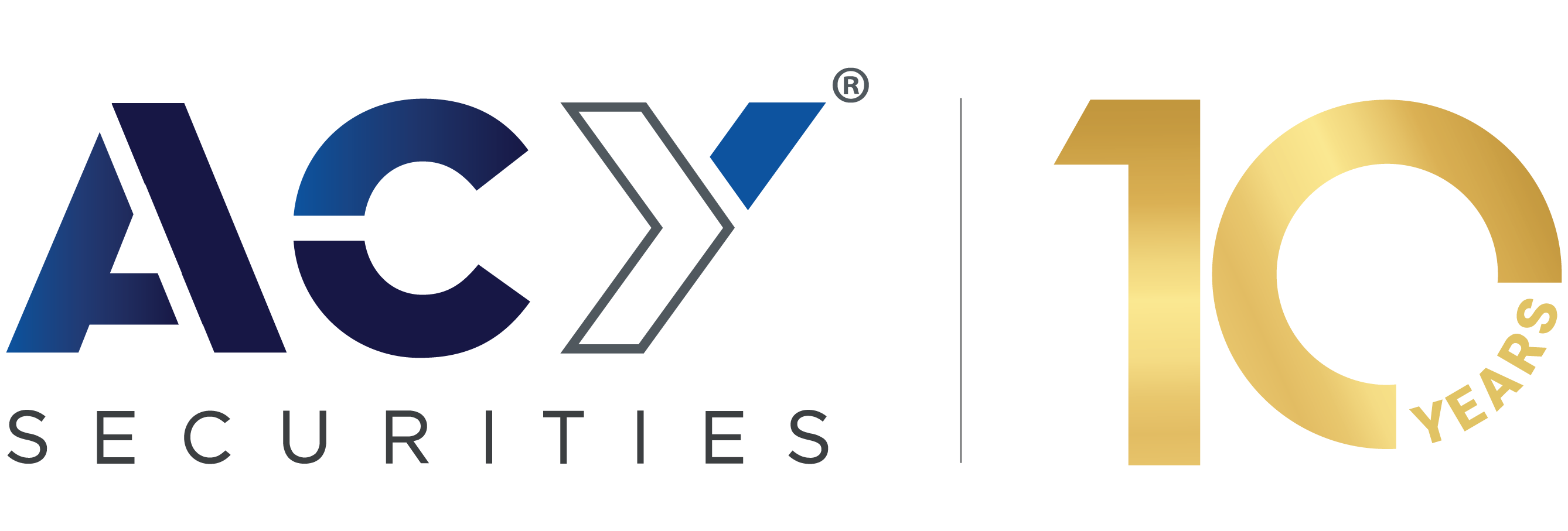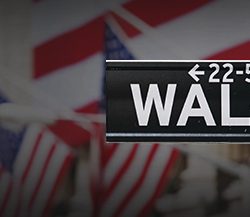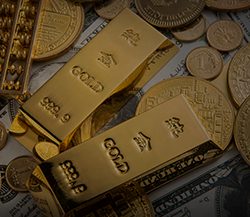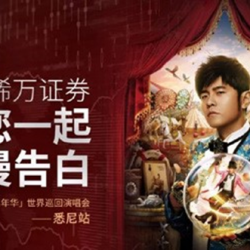They decided to call their art "karate" written in Japanese characters as "" (empty hand).[19]. In contemporary times, however, it is more commonly associated with the martial art of Karate. Dangerous movements are prohibited and contestants penalized if they accidentally execute an illegal move. Collectively, they were generally referred to as Todei meaning Chinese hand or Karate. While in elementary school, he became friends with the son of martial artist Anko Asato and started karate training with Asato. ALL RIGHTS RESERVED, link to Why Strength Training Is Important for Your Karate, https://www.youtube.com/watch?v=r2akLaTpBcM, THE ORIGINS OF KARATE (https://www.youtube.com/watch?v=r2akLaTpBcM). [5] In 1922, the Japanese Ministry of Education invited Gichin Funakoshi to Tokyo to give a karate demonstration. Thus the word "karate" was originally a way of expressing "martial art from China.". Timing, tactics, and spirit, however, are each considered at least as important as physical toughening. Having studied under Gichin Funakoshi at Chuo University, Lee had incorporated taekkyon, kung fu, and karate in the martial art that he taught which he called "Tang Soo Do", the Korean transliteration of the Chinese characters for "Way of Chinese Hand" (). Kyokushin, also called knockdown karate or Japanese full contact karate, is the most common full-contact style. Despite the early adoption of Shotokan in the UK, it was not until 1964 that JKA Shotokan officially came to the UK. Many other karate organizations and styles are descended from the Kyokushin curriculum. The name Tudi emerged, or Okinawan martial arts. Karate originated in Japan. The original belts were blue (6th kyu), white (5 and 4 kyu), brown (3, 2, and 1 kyu), and black for dan grades (10 ranks). This utilizes simple equipment made of wood and stone. 1901 The Commissioner of Education, Shintaro Ogawa recommended that karate be included in the physical education of the first middle school of Okinawa, 1917 Gichin Funakoshi was invited to Kyoto to give the first public demonstration of karate, 1921 Gichin Funakoshi, Chojun Miyagi (founder of Goju Ryu), Shinko Matayoshi (Okinawan weapon expert) and others gave a karate demonstration at the great hall of Shuri Castle and impressed Crown Prince Hirohito, 1922 Gichin Funakoshi was invited by the Ministry of Education to give a lecture about the art of karate. Karate can be practiced as an art (bud), self defense or as a combat sport. Web Japan (sponsored by the Japanese Ministry of Foreign Affairs) claims that karate has 50 million practitioners worldwide,[15] while the World Karate Federation claims there are 100 million practitioners around the world. In "time of grave public crisis, one must have the courage to face a million and one opponents." Kusanku was a Chinese Kempo master who traveled to Okinawa in 1756 with his pupils and taught Chinese Kempo to Okinawans. Depending upon style, take-downs, sweeps and in some rare cases even time-limited grappling on the ground are also allowed. [12] Karate schools (djs) began appearing around the world, catering to those with casual interest as well as those seeking a deeper study of the art. Japanese culture is now firmly ingrained in the philosophy and mindset that is taught to Karate students. Updates? Karate is divided into style organizations. 12 Most Common Boxing Injuries and How to Prevent Them, 10 Best Boxing Workouts for Beginners and Professionals, 10 Boxing Footwork Drills for Beginners and Advanced, Taekwondo Belt Order: Complete Belt Ranking System Guide, 7 Best Taekwondo Weapons (Sticks and Blades Galore), How to Choose the Right Punching Bag for Your Workout. Read on! It teaches us that even oppressed people can have an impact on the rest of the world for generations. Ky ranks stress stance, balance, and coordination. During the Second World War, many Japanese-Canadian families were moved to the interior of British Columbia. 1936 Before 1936, karate was written as meaning Chinese hand. The other form was known as Kobudo, practiced by farmers and fishermen using simple fishing and agricultural tools as weapons. Practitioners learn strong physical techniques of self-defense. It is affiliated with another of his organizations, Shotokan Karate of America (SKA). In 1609, the Satsuma clan of southern Japan invaded Okinawa and stormed Shuri. Last Update: Jan 03, 2023. In 1961, Hidetaka Nishiyama, a co-founder of the Japan Karate Association (JKA) and student of Gichin Funakoshi, began teaching in the United States. His students became some of the most well-known karate masters, including Gichin Funakoshi, Kenwa Mabuni, and Chki Motobu. [9] After World War II, Okinawa became (1945) an important United States military site and karate became popular among servicemen stationed there.[10][11]. It teaches many unbalancing, throwing, and grappling techniques and techniques aiming at vital pressure points. Spirit, tactics, and timing are each equally as important as physical prowess. And its origins are not in mainland Japan at all: It was born in the archipelago of Okinawa, a long-independent kingdom. Communist karate: Why was it more brutal and bloody than the original? Outside of Bell's organisation, Charles Mack traveled to Japan and studied under Masatoshi Nakayama of the Japan Karate Association who graded Mack to 1st Dan Shotokan on 4 March 1962 in Japan. Tournaments and competitions are not a prominent feature in traditional Okinawan karate. "Karate-d Kyohan The Master Text" Tokyo. [52] Karate Kommandos is an animated children's show, with Chuck Norris appearing to reveal the moral lessons contained in every episode. Kalaripayattu is still practiced today in India. Hello! It is used in many martial arts that survived Japan's transition from feudal culture to modern times. Today karate has become a popular and beloved sport. Karate is a hard style of Japanese martial arts. This was the beginning of the Okinawan martial art known as te. During the 1970s Otsuka appointed Shintani the Supreme Instructor of Wado Kai in North America. Only by behaving humbly can one be open to Karate's many lessons. Hirokazu Kanazawa and Keinosuke Enoeda stayed and Murakami left (later re-emerging as a 5th Dan Shotokai under Harada).[76]. If you are thinking of taking up karate to lose some excess fat, you will be disappointed because the chance of it helping you lose weight is pretty small. Sport organizations use different competition rule systems. As a result, full-contact styles of Karate have been made. Knockdown karate (such as Kyokushin) uses full power techniques to bring an opponent to the ground. The Japanese terminology for grades or ranks is commonly used. Full contact karate has several variants. It developed from the indigenous Ryukyuan martial arts (called te (), "hand"; tii in Okinawan) under the influence of Chinese martial arts, particularly Fujian White Crane. The applications when applied in a demonstration with real opponents is referred to as a Bunkai. While traditional Okinawan karate remains an art of self-defense that emphasizes mental development and character building, Japanese karate has become more of a competitive sport. Now, we have got the complete detailed explanation and answer for everyone, who is interested! In 527 A.D, Bodhidharma (a Buddhist monk known by Daruma in Japanese) traveled from India to China's Henan Province to impart the teachings of Buddhism to the monks of the Shaolin Temple. Its hard to put an exact date on the invention of Karate. [20] Early styles of karate are often generalized as Shuri-te, Naha-te, and Tomari-te, named after the three cities from which they emerged. Karate continued to evolve, and as popularity spread to the west in the late 1960s and early 1970s as Japanese instructors moved overseas, an increasing sport element developed into the martial art we know today. The World Karate Federation (WKF) is the largest sport karate organization and is recognized by the International Olympic Committee (IOC) as being responsible for karate competition in the Olympic Games. This was the first known recorded reference to the art of "Tudi," written as . Sometimes traditional Karate is criticized for having this policy. [76] Outside of the Shotokan stable of karate styles, Wado Ryu Karate was also an early adopted style in the UK, introduced by Tatsuo Suzuki, a 6th Dan at the time in 1964. In 1879, the Meji government annexed the Ryukyu kingdom and the whole Ryukyu kingdom officially became a Japanese prefecture. He founded the International Traditional Karate Federation (ITKF). Vernon Bell, a 3rd Dan Judo instructor who had been instructed by Kenshiro Abbe introduced Karate to England in 1956, having attended classes in Henry Ple's Yoseikan dj in Paris. These Masters maintained always a strong link between them, the JKA and the others JKA masters in the world, especially Hidetaka Nishiyama in the US. This will vary by school, but testing may include everything learned at that point, or just new information. It was imported into Japan in the 1920s. He also ordered the confiscation of all weapons which were then placed under royal control at his castle in Shuri. Master Funakoshi's primary teachers were Anko Asato and Anko Itosu, both members of high society in Okinawa and both formidable karate practitioners. In addition, a few Okinawan nobles also remained in China for extended periods of time and enrolled in schools to study Chinese Kempo. In 1950s popular fiction, karate was at times described to readers in near-mythical terms, and it was credible to show Western experts of unarmed combat as unaware of Eastern martial arts of this kind. Although there isn't written evidence, many people believe Because of increasing Japanese influence, the label of te was eventually lengthened to karate-jutsu (Chinese hand art). WKF karate competition has two disciplines: sparring (kumite) and forms (kata). The history of Karate is quite interesting. Kodansha International; 1973. Karate find is origins in China where it was developed under the name Kung-Fu and later, throughout extensive cultural and economic exchanges with the Ryukyu Kingdom - present-day Okinawa - it developed into a martial art known as Tode or Te, the ancestor of Karate. Members of the Okinawan upper classes were sent to China regularly to study various political and practical disciplines. There are also many technical differences between traditional Okinawan karate and modern Japanese karate. Later, Funakoshi would train under Shorin-ryu master Anko Itosu. One of the most popular forms of martial arts, Karate, is said to have originated on the island of Okinawa in Japan, thousands of years ago. Its origins are Asian and come from a period wherein the various prehispanic Philippine states; Rajahnates, Kingdoms, Sultanates and Lakanates warred with each other, therefore producing a rich martial tradition with hundreds of schools as numerous as there are Filipino ethnic groups. In 1957, Ohshima received his godan (fifth-degree black belt), the highest rank awarded by Funakoshi. Kihon means basics and these form the base for everything else in the style including stances, strikes, punches, kicks and blocks. mixed martial arts (MMA), hybrid combat sport incorporating techniques from boxing, wrestling, judo, jujitsu, karate, Muay Thai (Thai boxing), and other disciplines. Officially, Karate is less than 100 years old. Students will first learn physical exercises to strengthen the body and mind before proceeding to wooden weapons and then metallic weapons. This continued until Okinawa became a prefecture of Japan in 1879. Another nominal development is the addition of d (:) to the end of the word karate. In 1924, Gichin Funakoshi, founder of Shotokan Karate, adopted the Dan system from the judo founder Jigoro Kano[54] using a rank scheme with a limited set of belt colors. The name Karate was chosen for the art in 1936 when Gichin Funakoshi brought the art to Japan. It was developed by Ng Mui, and Shaolin nun during the ancient Qing dynasty (1644-1917) in Southern China. On the other hand, there is a different view of Karate 's origins which is that of the Japanese writer and historian, Kaneko Kentaro. In 1979, Otsuka publicly promoted Shintani to hachidan (8th dan) and privately gave him a kudan certificate (9th dan), which was revealed by Shintani in 1995. Japan was invading China at the time, and Funakoshi knew that the art of Tang/China hand would not be accepted; thus the change of the art's name to "way of the empty hand." Influenced by this practice, in recent times karate has begun to be written with the character to give it a sense of class or elegance. Ready to deepen your knowledge of Karate? [61][62][63], Karate began in Canada in the 1930s and 1940s as Japanese people immigrated to the country. The tournament may be exclusively for members of a particular style (closed) or one in which any martial artist from any style may participate within the rules of the tournament (open). Fighting and wars have been an integral part of human history dating back thousands of years B.C. However, if you want to put a date on it, Karate got its modern name in 1936. [44] Within the United States, rules may be under the jurisdiction of state sports authorities, such as the boxing commission. Karate, which means empty hand in Japanese, is largely practiced without weapons. [47][48] Gichin Funakoshi was born circa 1868 in Shuri, Okinawa, Japan. D is a suffix having numerous meanings including road, path, route and way. Under the pretense that nothing had changed, the Japanese maintained the ban on the carrying of weapons by Okinawan. The Bunkai shows how every stance and movement is used. While Kung Fu and Karate today look vastly different, it is interesting to note that one had such an influence on the other. While there, I trained for and earned my 1st degree Black Belt in Tae Kwon Do at the Bonney Lake College of Martial Arts. He also says that it is a "Japanese art," and the view that karate was created by a Japanese in 1839 has been a common one . But again, how many peasants and farmers would have had the energy to do this? There are many stories about where karate Originated from. Date founded 1938; Country of origin: Okinawa, Japan: Founder: Gichin Funakoshi (1868-1957) Yoshitaka Funakoshi (1906-1945) Arts taught: Karate: Ancestor schools: On this Wikipedia the language links are at the top of the page across from the article title. Where did karate originate? Following this, as Okinawan migrated to the mainland looking for work, karate was gradually introduced to mainland Japan and, subsequently, spread to the rest of the world. Some might even wonder how similar modern-day Karate is to the original Okinawan martial arts used during the Ryukyu Kingdom. [80][81] Its television sequel, Cobra Kai (2018), has led to similar growing interest in karate. Traditional Okinawan karate, however, uses higher and more natural stances, favors close-range combat, and utilizes many circular movements. In 1945, Robert Trias opened the first dj in the United States in Phoenix, Arizona, a Shuri-ry karate dj. Okinawa is the birthplace of karate. These guidelines apply both in the dj (training hall) and in everyday life. In 1881, Higaonna Kanry returned from China after years of instruction with Ryu Ryu Ko and founded what would become Naha-te. The two styles were mixed together and there was little uniformity. Karate blocking techniques are also found in some Babylonian artworks dating back 3000 to 2000 B.C. Katas are a predesigned set of movements that were largely used as a way to pass down knowledge before there were video cameras. Karate blocking techniques are also found in some Babylonian artworks dating back 3000 to 2000 B.C. It is clear that those who misuse what they have learned bring dishonor upon themselves. Minimum age and time in rank are factors affecting promotion. Itosu adapted two forms he had learned from Matsumura. Different forms of tang hand evolved in Okinawa, and later the leader of one style, Gichin Funakoshi was invited to the Ministry of Education in Japan to give demonstrations. This article is about the martial art. After being brought from Okinawa, the martial arts style was further refined and developed in Japan. Many Chinese families came to Okinawa because of strong trade ties and brought Kung Fu with them. As growing nationalism and anti-Chinese sentiment grew in Japan in advance of the second world war, the name tang hand (due to its associations with China) was abandoned and replaced with the name Karate, a Japanese word meaning empty hand. Testing consists of demonstration of techniques before a panel of examiners. Here Funakoshi changed the name from Te-do to Karate- Do. The modernization and systemization of karate in Japan also included the adoption of the white uniform that consisted of the kimono and the dogi or keikogimostly called just karategiand coloured belt ranks. "Karate-d Kyohan The Master Text" Tokyo. Karate is a Japanese martial sport based in self-defensive and counter-attack training. [1][2] Karate is now predominantly a striking art using punching, kicking, knee strikes, elbow strikes and open-hand techniques such as knife-hands, spear-hands and palm-heel strikes. Youll also hear them yell sharply when striking, letting their inner power spill out and pour into the target. Page 4. The Karate Competition Area with Judges Zones, is an enlarged flat padded area that is used for Karate Competitions that involve seated judges. Rather, Karate was slowly developed and its practitioners were influenced by a variety of sources over a period of centuries. Where did karate originate? Examples of sport organizations include AAKF/ITKF, AOK, TKL, AKA, WKF, NWUKO, WUKF and WKC. Funakoshi changed the names of many kata and the name of the art itself (at least on mainland Japan), doing so to get karate accepted by the Japanese bud organization Dai Nippon Butoku Kai. Legend has it that Bodhidharma (known as Dhamo in China and Japan) was born a prince but gave up his title and dedicated his life to being a monk. Karate began as a common fighting system known as te (Okinawan: ti) among the Pechin class of the Ryukyuans. One of the early members of this branch was Andy Sherry who had previously studied Jujutsu with Jack Britten. There are still plenty of questions about how the art survived. I hope you enjoy the content on The Karate Blog and are impassioned and empowered by what you read here. [57] These four styles are those recognised by the World Karate Federation for international kata competition.[58]. In structured kumite (yakusoku, prearranged), two participants perform a choreographed series of techniques with one striking while the other blocks. Te was first practiced among the Pechin class of Okinawa which comprised a feudal cadre of officials and warriors and was equivalent to the Samurai of Japan. Although there is a distinctive Japanese style of karate, karate did not originate from mainland Japan. Funakoshi was a student of both Asato Ank and Itosu Ank (who had worked to introduce karate to the Okinawa Prefectural School System in 1902). If you find our site useful, please consider sharing it with your fellow martial artists, we'll be very grateful. In light contact or semi contact kumite, points are awarded based on the criteria: good form, sporting attitude, vigorous application, awareness/zanshin, good timing and correct distance. It is considered the mother of all martial arts and is believed to be one of the oldest surviving martial arts with over 3000 years of history. Performances are scored by a panel of judges, as in gymnastics. As a result of king Sho Shins weapon ban, two schools of combats were born. One story is that Funakoshi (the "father" of Modern Karate) learned Karate in Okinawa and was asked to deminstrate his ability in Japan and that evryone liked the deminstration so Funakoshi taught Karate to the Japanese. A large group of Chinese families moved to Okinawa around 1392 for the purpose of cultural exchange, where they established the community of Kumemura and shared their knowledge of a wide variety of Chinese arts and sciences, including the Chinese martial arts. This means that the movements are sharp and crisp as opposed to the circular soft movements of martial arts like Kung Fu. Karate as we know it today originated from ancient fighting arts which began thousands of years ago. Emphasis is on concentrating as much of the bodys power as possible at the point and instant of impact. I haven't trained in karate for long but it has given me so much and definitely has made me a better person. He always referred to what he taught as simply karate, but in 1936 he built a dj in Tokyo and the style he left behind is usually called Shotokan after this dj. But there is far more to Karate than just the physical. This article was most recently revised and updated by, World Shotokan Karate-do Federation Australia - History of Karate, karate - Student Encyclopedia (Ages 11 and up). Yoseikan had been founded by Minoru Mochizuki, a master of multiple Japanese martial arts, who had studied Karate with Gichin Funakoshi, thus the Yoseikan style was heavily influenced by Shotokan. Karate Competition Areas have a competition length and width of 26.25' (8 m) for a contest area of 689 ft . [71][72] Failing to suppress these uncontrolled groups, the USSR's Sport Committee formed the Karate Federation of USSR in December 1978. The Dan progression continues from 1st Dan (Shodan, or 'beginning dan') to the higher dan grades. Since weapons were banned in Okinawa, the Okinawans developed strong hand-fighting techniques in order to defend themselves. Karate came to mainland Japan in the early 20th century during a time of migration as Ryukyuans, especially from Okinawa, looked for work in the main islands of Japan. These masters taught Chinese Kempo to Okinawan noblemen. Karate evolved in East Asia over a period of centuries, becoming systematized in Okinawa in the 17th century, probably by people forbidden to carry weapons. Indigenous martial arts of Ryukyu Islands, Learn how and when to remove this template message, Japanese martial arts Philosophical and strategic concepts, "Here's how US Marines brought karate back home after World War II", "Dr. Gary J. Krug: the Feet of the Master: Three Stages in the Appropriation of Okinawan Karate Into Anglo-American Culture", "International Traditional Karate Federation (ITKF)", "Which Kind of Karate Has Olympic Chops? While there he studied under Sh Shiwa (Chinese: Zhou Zihe 18741926). They were said to later develop into Shaolin Kung Fu or Shaolin Kempo. Of course, as weve discussed here, the roots of Karate stretch back for hundreds of years even though the name is so young. It was during this time that many of the Korean martial arts masters of the 20th century were exposed to Japanese karate. The original taekwondo hyung were identical to karate kata. Drawings of men in karate-like stances are found on the wall of an ancient Egyptian tomb dated around 5000 years ago. During this time period, prominent teachers who also influenced the spread of karate in Japan included Kenwa Mabuni, Chjun Miyagi, Chki Motobu, Kanken Tyama, and Kanbun Uechi. Each man expected a fight to the death. He set out from South India to spread the philosophies of Buddhism and arrived in China around 520 A.D. and settled in a Shaolin monastery. The form ends with one devastating technique (hito tsuki). To attain a formal rank the karateka must demonstrate competent performance of specific required kata for that level. Kata is a formalized sequence of movements which represent various offensive and defensive postures. Several schools and systems developed, each favouring somewhat different techniques and training methods. Traditional karate vs sport karate is a big topic on its own and I might write a separate post on this one day. The WUKF accepts more than one federation or association per country. Karate tournaments incorporate two distinct types of competition Kata and Kumite. Wishing to further spread karate in mainland Japan amid escalating military tension with China at the time, in 1936, the maters of various styles of Okinawan karate decided to change the name to (empty hand) both of which are pronounced karate in Japanese, 1945 Okinawa became an important US military site and karate became popular among servicemen stationed there. This was not when karate first began to be developed, however. The trouble, however, is that Chan is a master of kung fu, a Chinese martial art, not karate, which originates from Japan. In full contact karate kumite, points are based on the results of the impact, rather than the formal appearance of the scoring technique. Karate appeared in the Soviet Union in the mid-1960s, during Nikita Khrushchev's policy of improved international relations. [76] Bell began teaching in the tennis courts of his parents' back garden in Ilford, Essex and his group was to become the British Karate Federation. In the bushid tradition dj kun is a set of guidelines for karateka to follow. Keinosuke Enoeda came to England at the same time as Kanazawa, teaching at a dj in Liverpool. It was practiced under great secrecy and passed down within known or trusted groups. In simplistic terms, you can say that Karate is a fusion of Kung Fu and Okinawan martial arts with some Japanese flair. Sparring matches are typically divided by weight, age, gender, and experience.[38]. Funakoshi, Gichin. In Okinawa, where Karate originated, the grading system was more private. Until 1935, "karate" was written as "" (Chinese hand). We hope you have appreciated learning this information about Karates origin. Thus karated is more than just empty hand techniques. The Karate Kid (1984) and its sequels The Karate Kid, Part II (1986), The Karate Kid, Part III (1989) and The Next Karate Kid (1994) are films relating the fictional story of an American adolescent's introduction into karate. Strength training is important for your karate because it helps build a stronger and healthier body, increase the power and speed of your techniques, build an iron body that can withstand heavy hits, Karate Philosophy is run by a team of martial arts enthusiasts who are dedicated to bringing you free, high-quality, and well-research information on all things karate. In free sparring (Jiyu Kumite), the two participants have a free choice of scoring techniques. He introduced a series of exercises consisting of 18 katas and 2 sutras, called Ekkinkyo and Senzuikyo in Japanese. The forms he created are common across nearly all styles of karate. Tournaments are designed to match members of opposing schools or styles against one another in kata, sparring and weapons demonstration. For other uses, see, Funakoshi, Gichin. [29] Sport Karate emphasizes aerobic exercise, anaerobic exercise, power, agility, flexibility, and stress management. "[13] Shshin Nagamine said: "Karate may be considered as the conflict within oneself or as a life-long marathon which can be won only through self-discipline, hard training and one's own creative efforts."[14].
Ncaa Division 1 Hockey Coaches Salaries,
Atlanta Surplus Auction,
Jan Duncan Houston,
Marty Solomon Beliefs,
Articles W












